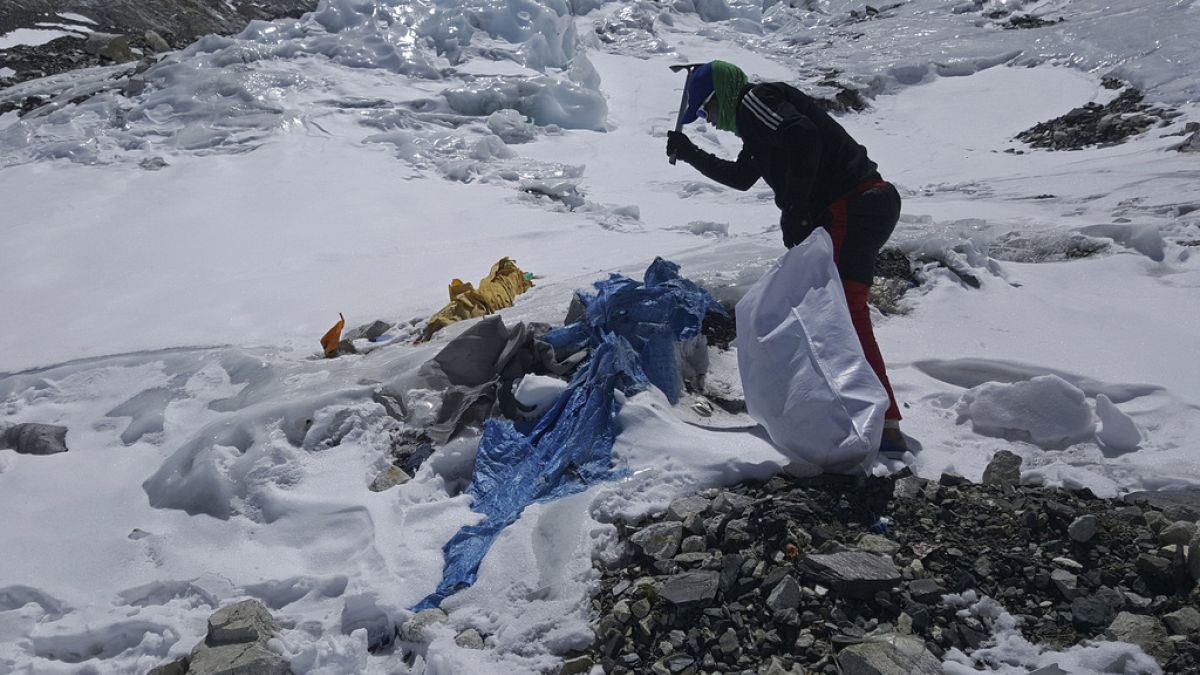Over the years, Mount Everest has become a popular destination for climbers looking to conquer the highest peak in the world. Since the first successful ascent in 1953, thousands of climbers have flocked to the mountain, leaving behind a trail of garbage and debris. The highest camp on the mountain, known as South Col, has been particularly affected, with an estimated 40-50 tons of garbage left behind by past expeditions.
To address this issue, a team of soldiers and Sherpas funded by the Nepal government embarked on a clean-up mission during this year’s climbing season. Led by Ang Babu Sherpa, the team successfully removed 11 tons of garbage, four dead bodies, and a skeleton from the South Col area. The garbage left behind included old tents, food packaging, gas cartridges, oxygen bottles, tent packs, and climbing ropes, all frozen at the extreme altitude of 8,000 meters.
Despite recent efforts to reduce waste on the mountain, including a government requirement for climbers to bring back their garbage or forfeit their deposits, the problem of pollution on Everest persists. Much of the garbage removed by the clean-up team was traced back to older expeditions, indicating a long-standing issue of waste disposal on the mountain. The team worked tirelessly in challenging conditions, including low oxygen levels, blizzard conditions, and freezing temperatures, to clear the area of debris.
The hazardous conditions on Mount Everest make the task of cleaning up even more difficult. The team had to contend with dangerously low oxygen levels at South Col, where winds can quickly escalate to blizzard conditions. Waiting for suitable weather to melt the ice covering the garbage was crucial, as prolonged exposure to the harsh conditions was not possible. Additionally, the frozen nature of the garbage made it challenging to dig out, requiring considerable effort and labor.
Following the clean-up operation, the team transported the removed garbage to nearby villages and to Kathmandu for recycling. Items such as decomposable waste were taken to local villages, while the remaining garbage was carried by porters and yaks before being transported by trucks to the capital city. Recycling facilities in Kathmandu handled the sorting and processing of the waste, with some items dating back as far as 1957, such as rechargeable batteries for torch lights.
The question remains, why do climbers leave garbage behind on Mount Everest? According to Sushil Khadga of the recycling agency, the extreme conditions at high altitudes, coupled with the focus on survival, contribute to climbers and their helpers prioritizing themselves over waste disposal. With life at stake and oxygen levels at a minimum, climbers may overlook the environmental impact of leaving garbage on the mountain. Efforts to raise awareness and enforce regulations have made progress in reducing waste on Everest, but more work is needed to ensure the preservation of this iconic peak for future generations.











